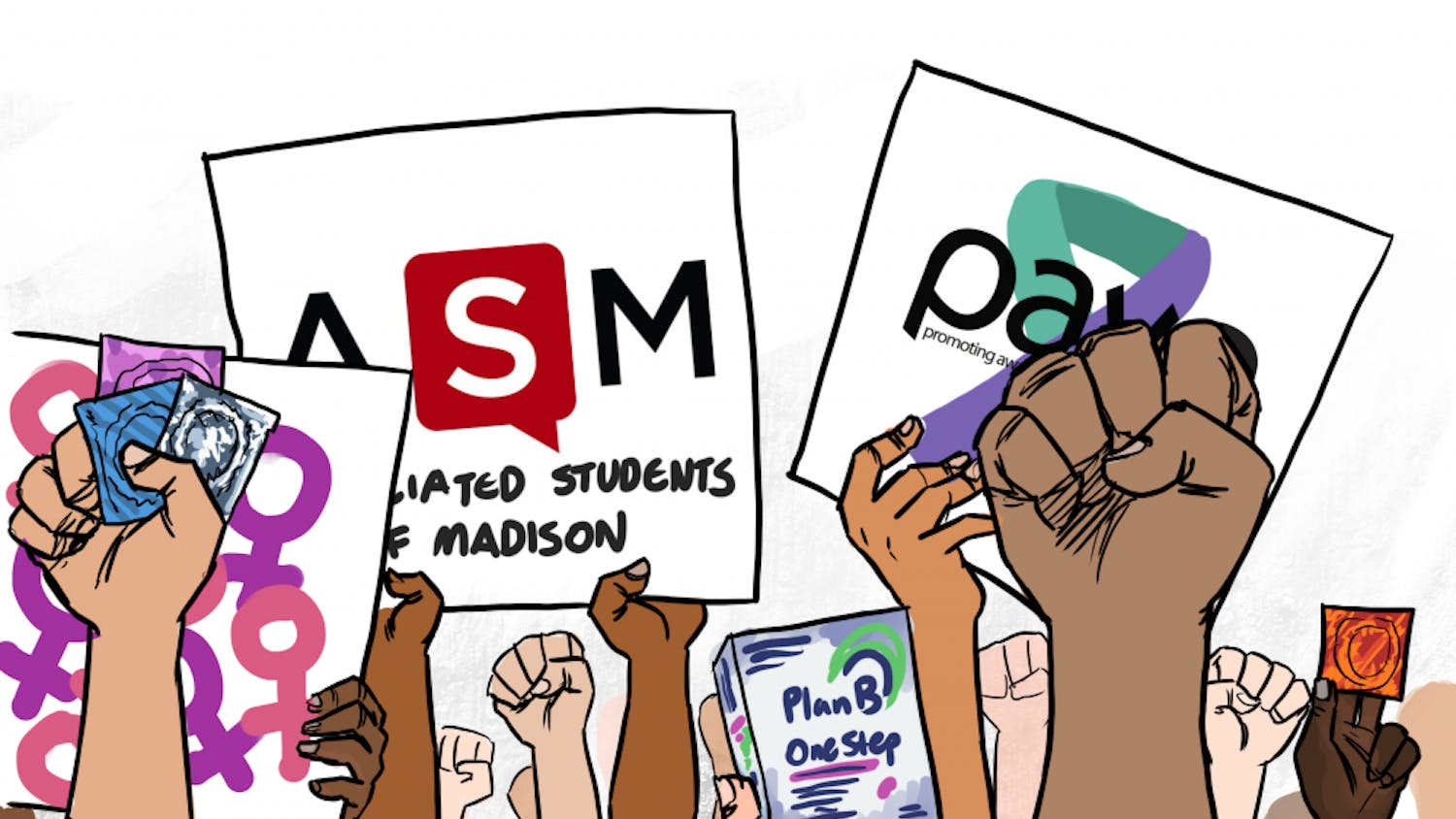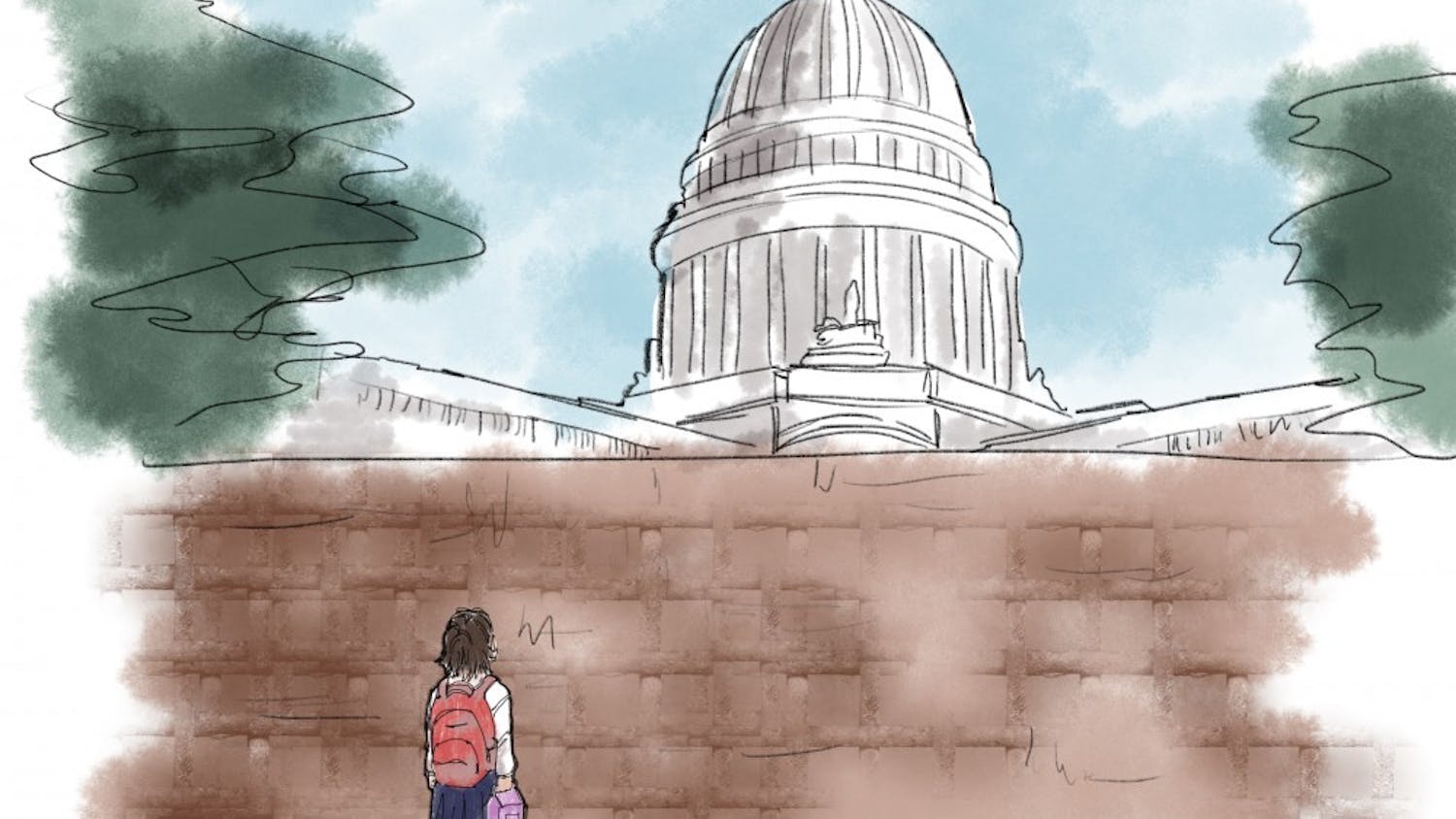Magazines featuring photoshopped women. Hypermasculine men staring down from billboards. Women in dresses and men in suits.
The fashion industry places expectations on bodies, and often presents the notion that there are two genders with very specific sets of rules. However, the fashion industry may be changing to become more fluid and explore gender as a spectrum..
Fashion does not exist in a vacuum; it fits within a social context, according to Marina Moskowitz, a UW-Madison professor who serves as the Lynn and Gary Mecklenburg cChair in Textiles, Material Culture and Design. Because of this, fashion has implications for gender expression.
And, fashion is a huge industry — it is larger than book, music and movie industries, according to Maria Kurutz, a UW-Madison design studies professor. This is part of the reason that fashion is so complex; it can be both empowering and disempowering, a way of individualized expression and a way of joining a shared culture.
Historically, women have been held to unrealistic body standards and faced inequalities in the practicality of their clothing. For example, menswear typically has better, deeper pockets than womenswear, which often has small pockets or none at all.
Men, on the other hand, have been constrained to wearing conventionally masculine clothes, according to Emily Popp, a UW-Madison design studies graduate student.
“[Women] can wear suits," Popp said. “Whereas it remains the case where people who are perceived to be male, if they wear something that's perceived to be female, people lose their minds.”
The body neutrality movement — an initiative started by genderqueer people of color — not only pushes against the gender binary, but advocates for all individuals to feel authentically themselves by moving through the world without thinking too much about what their bodies look like.
For those who feel constrained by their fashion options, and those who don’t identify as either male or female, fashion has’s evolved to increasingly reject the gender-binary. According to Kurutz, androgynous and unisex clothing is slowly becoming more available.
UW-Madison textiles and fashion design student Austin Morrow said gender inequalities in fashion are present for those who do not follow traditional gender norms.
“It’s not really a clear- cut, men versus women issue,” Morrow said. “It’s an inequality that affects everyone in a completely unique way. Generalizing that inequality to men versus women erases a massive number of experiences. A great deal of those erased experiences are the experiences of the people that I design for.”
Morrow’s collection explores how queer identity is surveilled and scrutinized by the media.
“The collection consists of clothing that is gender- neutral at its core but presents in a more feminine way,” Morrow said. “I try not to identify it as either menswear or womenswear because those labels seem constricting to me. I often just call it feminine fashion for anyone.”
Morrow isn’t the only student interested in feminine fashion. Allison Gorniak, a textiles and fashion design student, is creating a collection of feminine unisex fashion for her thesis project.
“I think, currently, the industry has more overlap for women wearing men's apparel, silhouettes and styles than for men to do the same with women's apparel,” Gorniak said. “This is an untapped market in many ways, and we have so much room to explore and grow in this overlap.”
When asked about where she thinks fashion is headed, Gorniak said she sees the future to be more fluid and genderless.
“We already have a slow progression of the overlap in feminine and masculine fashion, and with our generation it will continue to be explored,” Gorniak said.
Furthermore, people can have vastly different experiences depending on who they are and how they look, according to Kate Phelps, a lecturer in UW-Madison’s Gender and Women's studies department who teaches Body Politics.
There is a social capital to being attractive and therefore one who is not considered attractive may have less benefits than one who is considered attractive, Phelps said. It is also important to note that the concept of beauty is related to what’s happening in culture at the current time. A; at different moments, different bodies are considered to be the ideal.
Additionally, Phelps said as fashion and beauty standards change shape, people work to adapt and fit these standards, too, following trends and spending money on new products. Some industries profit off of the insecurities that individuals may have about themselves.
Despite the inequalities and expectations of the fashion industry, almost every person in the world wears clothes and almost every person in the world dresses themselves.
“I see it as a really egalitarian, accessible art form,” Popp said.
Fashion is less constrained than it ever has been before, Kurutz said. She believes that while in the past, one needed to wear a specific style and cut of clothing in order to fit a trend — this is no longer the case.
“You can wear capris and you can wear leggings and you can wear wide-legged pants now, and they are all in vogue,” Kurutz said. “It’s much more individual.”
Similarly, Phelps stressed the importance of being authentic and having an awareness of the fashion and beauty industry.
“I always say that the most important thing is really trying to be aware of what we are consuming and from who,” Phelps said. “At the same time I think it is really important to help people understand that ... in order to be authentic, they can practice whatever kinds of processes they want related to beauty.”






